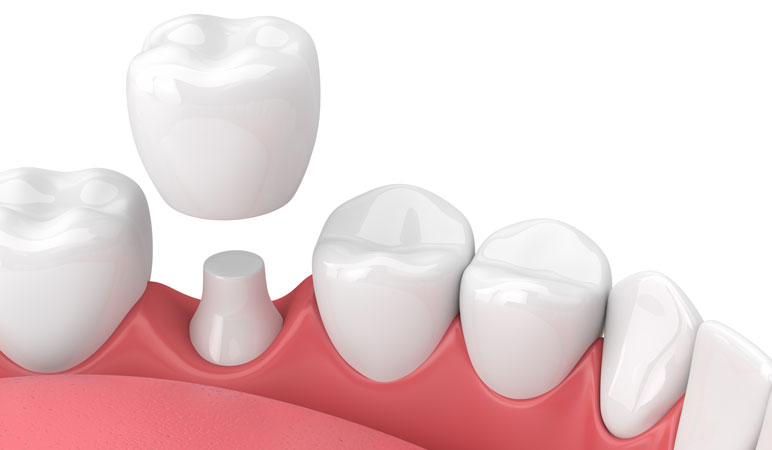Dental crowns cover or “cap” a tooth in order to restore the normal function and appearance of the tooth. Crowns may be made as all metal, porcelain fused to metal, or all-ceramic (porcelain). Crowns are indicated for teeth with very large fillings, teeth that have had a root canal, fractured teeth, worn teeth, misshaped teeth, and discolored teeth.
There are many different materials available to restore a tooth with a crown. Each material possesses inherent limitations and specific requirements that must be understood in order to maximize its long term success. This is one of the areas of specialty training that a Prosthodontist receives while in their training program.
Dental Crown Process
The basic process includes preparing a tooth to receive the crown. This often requires building up the remaining tooth structure prior to tooth preparation. This helps ensure proper resistance to crown removal is present prior to crown insertion and delivery.
Once the tooth is prepared, a temporary crown is fabricated. Impressions are made of the prepared tooth and sent to the dental lab technician for the crown fabrication. The provisional crown is temporarily cemented in place.
When the crown is complete at the lab, you will come back to the dental office to have the provisional crown removed and the new final crown will be tried-in. Minor adjustments are usually needed. Once the adjustments are made and you approve the appearance the crown, it will then be cemented permanently to your tooth.
